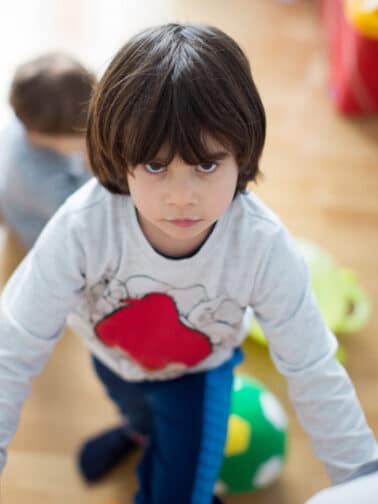TL;DR –When you grow up with relational trauma, you learn to survive on emotional breadcrumbs—accepting scraps of affection, attunement, and safety because that's all that was available, not realizing these meager portions aren't normal or sufficient. Your developing brain acclimated to whatever was offered (inconsistent warmth, conditional love, minimal emotional support), but the deeper hunger for secure attachment, validation, and genuine care never disappeared—it just got redirected toward food, achievements, unhealthy relationships, or substances that temporarily numbed the ache. These coping strategies might have helped you survive childhood and adolescence, but in adulthood they often stop working, leaving you exhausted from workaholism, trapped in destructive patterns, or wondering why relationships feel so unsatisfying despite doing everything "right."
The profound truth is that none of us are meant to survive on scraps, and recognizing this—really seeing how you've normalized emotional starvation—becomes the first step toward learning to nourish yourself properly. There's still time to develop the capacity for healthy boundaries, emotional regulation, secure relationships, and self-compassion; still time to learn what a full emotional meal looks and feels like. This isn't about getting these needs met from those who could only offer breadcrumbs, but about building new sources of nourishment and sometimes making hard choices to distance yourself from those who keep you hungry.
Coming from relational trauma backgrounds skews our sense of what’s normal.
“Most of us learn in childhood to “cope”–which is to say ignore, numb, manage, or reinterpret reality. We do it to survive, but our relational instincts get bent in the process.”
– W. Allen Morris
When we come from relational trauma backgrounds, we have many unmet needs.
But also, when we come from relational trauma backgrounds, our sense of what is “normal” (aka: healthy, functional, and appropriate) may become distorted.
What is relational trauma?
As I define it in my work, relational trauma, specifically childhood relational trauma, is the kind of trauma that results over the course of time in the context of a power-imbalanced and dysfunctional relationship (often between a child and caregiver) that results in a host of complex and lingering biopsychosocial impacts for the individual who endured the trauma.
It’s a set of experiences that takes place in relationship – usually with parents or caregivers – that can set a conscious and unconscious template of what we come to expect in our lives.
And in relational trauma experiences, that template is often unhealthy, dysfunctional, or maladaptive.
What templates can be formed?
Our belief about how worthy and lovable we are may be distorted.
And our sense of boundaries may be warped.
Our ability to feel regulated and safe may be impaired.
Our views on how reliable and consistent others are may be skewed.
And our belief about our needs and wants and what’s possible in terms of having those needs and wants met may be altered…
And that, specifically, is what I want to talk about today. Our beliefs about our needs and wants and what’s possible in terms of getting them met when we come from relational trauma backgrounds.
All of us, from the moment we are born, need to attach safely to others.
Our literal survival depends on it as infants and children.
But beyond food and shelter and the absence of danger, infants and children require attunement, mirroring, and positive interpersonal interactions to help shape and form our brains and nervous systems.
What do I mean by this?
Attunement, the process of being aware of and responsive to a child’s needs, is crucial for emotional attachment and the development of secure relationships.
It begins with meeting basic needs. But it also includes responding to a child’s emotional states in a way that makes them feel understood and safe.
This emotional connection is foundational for a child’s overall development, helping them to feel secure and fostering a strong foundation for their emotional and psychological growth.
Research highlights the impact of these interactions on brain development.
For instance, variations in mother-infant interactions have been associated with differences in infant brain volumes. This is particular in areas related to emotional regulation and socio-emotional functioning.
Curious if you come from a relational trauma background?
Take this 5-minute, 25-question quiz to find out — and learn what to do next if you do.
START THE QUIZStudies show that lower maternal sensitivity correlates with smaller subcortical grey matter volumes, and maternal sensitivity has been linked to better connectivity between the hippocampus and areas important for emotional regulation.
Additionally, the concept of “serve and return” interactions, where caregivers respond in a supportive and nurturing manner to children’s signals, is crucial for brain architecture.
These interactions help build critical skills for social engagement, including emotion regulation and frustration tolerance.
Parent-child synchrony, a form of interaction involving mutual focus and mirroring, supports the development of social engagement abilities and provides a template for biological synchrony, which is essential for tuning children’s systems to social life.
So clearly, attunement, mirroring, and positive prosocial reciprocal social interactions are crucial for our development.
But what if we don’t have that?
Or what if we don’t have it consistently?
Or what if we have something that passes for it some of the time?
For example, what if in one moment, mom is safe to be around but in a rage another time?
Or what happens when a parent is so intoxicated and influenced by drugs that they aren’t present and able to attune? To mirror? Or let alone have serve and return interactions?
Or what if one month you’re told by your father how strong and amazing you are and the next how dumb and lazy you are?
What if you learn that all you can expect from a caregiver is food on the table and a roof over your head? No loving gaze, no cuddles at night, no one sitting in the audience during your play…
What then?
As with most things in life, we acclimate.
Research has shown consistently that children do acclimate to relational experiences, even if they’re not healthy, through mechanisms that can have lasting impacts on their well-being and development.
We get used to what we’re presented with, our brains and psyches develop in response to the volume and quality of relational connection we’re provided, and we shape our conscious and unconscious beliefs and our behaviors around the reality we live with.
But, of course, very often, children lack a sense of what’s normal and functional due to a lack of lived experience and other models showcasing healthier, more functional behavior.
And so often, in cases where we don’t have adequate or optimal relational connection, we come to believe that what we’re experiencing is “normal” and we adapt.
We acclimate.
In lay terms, we become accustomed to being served bread crumbs of affection, warmth, safety, attunement, emotional support, fun and play…
We believe that the breadcrumbs are “normal” and we take what we can get.
But here’s the thing: we may accept the breadcrumbs, we may acclimate to them, but the larger hunger doesn’t go away…
The acclimation to little may happen; but the hunger of our unmet needs endures.
“It has become more about identifying the needs I didn’t have access to as a child that may be preventing me from living a wholesome life as an adult. It is more of unlearning and acknowledging so I can move forward. I longed for love and belonging as a child, but all I ever did was just exist in the presence of those who couldn’t offer me the love I so desperately needed. I became an adult who begged for love because I had no clue what healthy love looked like.”
― Elelwani Anita Ravhuhali
Even as we acclimate to breadcrumbs and get used to scraps of emotional satiety from our parents and caregivers, the larger need, the hunger for more doesn’t go away.
And what is this proverbial hunger?
What are our unmet needs from our relational trauma histories?
The hunger to be able to feel securely attached to others.
For the experience of being attuned to.
The experience of being consistently cared for.
Being touched and comforted.
The hunger for being seen and valued.
For moments of having our emotions respected, validated, and accepted.
Or for being told you’re special, just the way you are.
The hunger for being able to process conflict and disagreements safely (without the threat of losing the attachment).
The hunger for play and joy and lighthearted experiences.
All of these hungers are still at play – for children, for adolescents, for adults.
We don’t stop feeling hungry for these things even as we acclimate to the breadcrumbs of what may or may not be available from our caregivers.
So what happens when we don’t get our hungers fully met by the scraps and breadcrumbs from our earliest attachment relationships?
We find other ways of meeting those hungers.
Ways of coping with our intolerable feeling states.
Ways of attaching to something or someone else in lieu of being able to attach to those we live with.
We, quite frankly, find ways of feeling less bad.
And how do we do this?
This looks different for all of us, but common ways children and adolescents cope with their unmet hungers can include:
- Attaching to food – one of the first sources of comfort – and developing unhealthy relationships with it as we seek from it what we cannot get relationally.
- Attaching to achievements – throwing ourselves into academics or sports to derive a sense of worth, mastery, and permission to be alive from their accomplishments.
- Attaching to unsafe others (peer sexual partners, adults with poor boundaries, etc.) who seem to offer a semblance of what we crave from parents – attention, a sense of being wanted and being special.
- Attaching to substances that numb our painful emotions and fog our panicked minds – alcohol, street drugs, and more.
And these are but a few ways we attempt to get our proverbial hungers met.
We cobble together a meal – scraps of what we actually need and want from our caregivers, rounded out by what we hope will be nourishment from these other sources, and we take what nourishment we can from this.
But over time, often in adulthood, the way we cobble together our proverbial meal and the ways in which we attempt to slake our thirst and ease our hungry tummy stops working so well.
How we feast to meet our unmet needs may need to change.
“Children grow up wounded due to someone’s emotional recklessness. We become adults who stay longer than they should, in relationships that offer very little in return.”
― Elelwani Anita Ravhuhali
What may have worked earlier in life may stop working so well in adulthood.
The toll of our misguided attempts to meet our needs may start to accumulate.
The alcohol bloats our bodies and fogs our mind the next workday.
The enamel on our teeth starts to wear off after so much binging and purging.
The workaholism may rob precious years from time spent with our children.
The pattern of seeking out unhealthy romantic relationships may force your hand with time and the ability to have children.
Whatever and however this looks, there often comes a time in adulthood when we realize that the ways we’ve attempted to “feast” or, quite frankly, get a full meal to meet our needs – cobbling together scraps, breadcrumbs, and our other attempts – stops working so well.
And then what are we supposed to do?
What do we do if those hungers never leave us even after we’ve been children and are now adults?
What do we do if we still can’t get those needs met from those who raised us or those we may have in our lives now?
Please hear me: There is still time to have a more fulfilling meal.
There is still a chance to have a proverbial meal where your needs can be met, functionally.
What do I mean by this?
There is still time.
There is still time to learn how to be with your feelings. And not use potentially destructive and maladaptive behaviors to numb them out.
There is still time to learn what boundaries are and how to assert them. So you can keep yourself safe from those who would only give you scraps.
There is still time to learn what healthy communication looks like. And recognize when you’re at the receiving end of unhealthy communication.
There is still time to learn how to be in relationship with others. Learn how to recognize a healthy relationship. Tolerate its vulnerability of it. And receive nourishment from them.
There is still time to learn how to genuinely like and love and respect yourself and how to speak to yourself so very kindly.
So much so that abusive, dysfunctional people stay miles away from you because they know you won’t tolerate their behavior or their bread crumbs.
There is still time to learn how to assert your needs and wants in the world so that you can know what it takes for your hungers to be met and clearly ask for help in meeting them.
There is still time to love and be loved.
To feel the nourishment and feast that can come from being loved by healthy, functional others.
There is still time to make different choices that will reduce pain in your day to day life once you start to see your choices and options more clearly.
There is time to build a beautiful adulthood for yourself.
Unmet needs: How do we change the way we seek nourishment?
“Adulthood is an attempt to become the antithesis of the wounded child within us.”
― Stewart Stafford
But how do we change the way we seek nourishment?
How do we change our pattern of acclimating to scraps? Of seeking out nourishment from maladaptive behaviors and others? How can we do the work of cultivating a healthier, more nourishing meal for ourselves?
So much of my work with clients in my relational trauma recovery therapy work involves helping my clients become clear on their unmet needs from relational trauma experiences. How proverbially hungry they are. And how they coped to get their proverbial hungers met.
And then we work to help them stop those maladaptive behaviors. Those are nourishment attempts, yes, but also misguided and potentially damaging.
We also work on increasing their capacity to tolerate the nourishment that may actually be around them (because so many of us from relational trauma backgrounds struggle to see and receive nourishment even when it is actually available.)
We work on seeking out more nourishment from more healthy, functional and adaptive sources – relationally and otherwise.
And certainly, in our work together, this can look like me modeling what healthy, secure, attuned connection can look like and then teaching the skills to help clients go out and find this in their real lives after having an embodied experience.
And sometimes – and I know this may be controversial to hear – our work in relational trauma recovery therapy may also mean making hard, strategic choices to reduce contact with or distance entirely those who only give you breadcrumbs and scraps in lieu of a whole meal.
The bottom line is this: none of us are meant to survive on scraps.
We need and deserve to have nourishing meals, satiating emotional experiences and relationships in our lives.
Just because the breadcrumbs and scraps are familiar and normalized for you, doesn’t mean that they’re normal and functional.
Again: none of us are meant to survive on scraps.
And when we’re children, we don’t really have a choice around that.
But as adults, we do.
And exercising that choice to seek out more nourishing, robust proverbial meals is a powerful thing to do.
Here’s to healing relational trauma and creating thriving lives on solid foundations.
Learning to Receive Nourishment Through Reparative Experiences
The journey from surviving on breadcrumbs to receiving full emotional meals often requires what we call reparative experiences—new relational encounters that directly contradict and heal the wounds from your past. In therapy, this might look like experiencing consistent attunement for the first time, having your emotions validated without conditions, or discovering that conflict doesn’t mean abandonment.
These corrective moments don’t erase your history, but they literally rewire your nervous system’s expectations, teaching it that nourishment is possible, that you’re worthy of a full meal, not just scraps. The therapeutic relationship itself becomes a living laboratory where you practice receiving what was missing—the undivided attention, the emotional mirroring, the celebration of your authentic self without having to perform or shrink.
Through exploring what reparative experiences in relational trauma recovery actually look like, you begin to understand that healing isn’t just about understanding your breadcrumb past intellectually, but about physically experiencing the feast of genuine care your nervous system has been starving for.
This embodied experience of being truly seen and valued becomes the template for seeking similar nourishment in your life outside the therapy room, gradually building your capacity to recognize, tolerate, and ultimately expect the full emotional meals you’ve always deserved.
And now I’d love to hear from you in the comments below:
Did today’s essay resonate with you? If you come from a relational trauma background, do you feel like you personally learned to survive on scraps? What has helped you make more nourishing proverbial meals as an adult?
If you feel so included, please leave a message in the comments below so our community of 30,000 blog readers can benefit from your wisdom.
You never know when you leave a comment below what stranger on the other side of the globe you might be helping.
Thank you for being here. Until next time, please take such good care of yourself. You’re so worth it.
Warmly,
Annie
References
- Van Otterloo, JoAnna. “Attunement.” St. David’s Center for Child and Family Development, 25 Mar. 2022, https://bit.ly/49lgbzq.
- “Serve and Return.” Center on the Developing Child at Harvard University, no date, https://bit.ly/4byZiCO.
- Garner, Andrew, and Yogman, Michael. “Preventing Childhood Toxic Stress: Partnering With Families and Communities to Promote Relational Health.” Pediatrics, vol. 148, no. 2, August 2021, https://doi.org/10.1542/peds.2021-052582.





